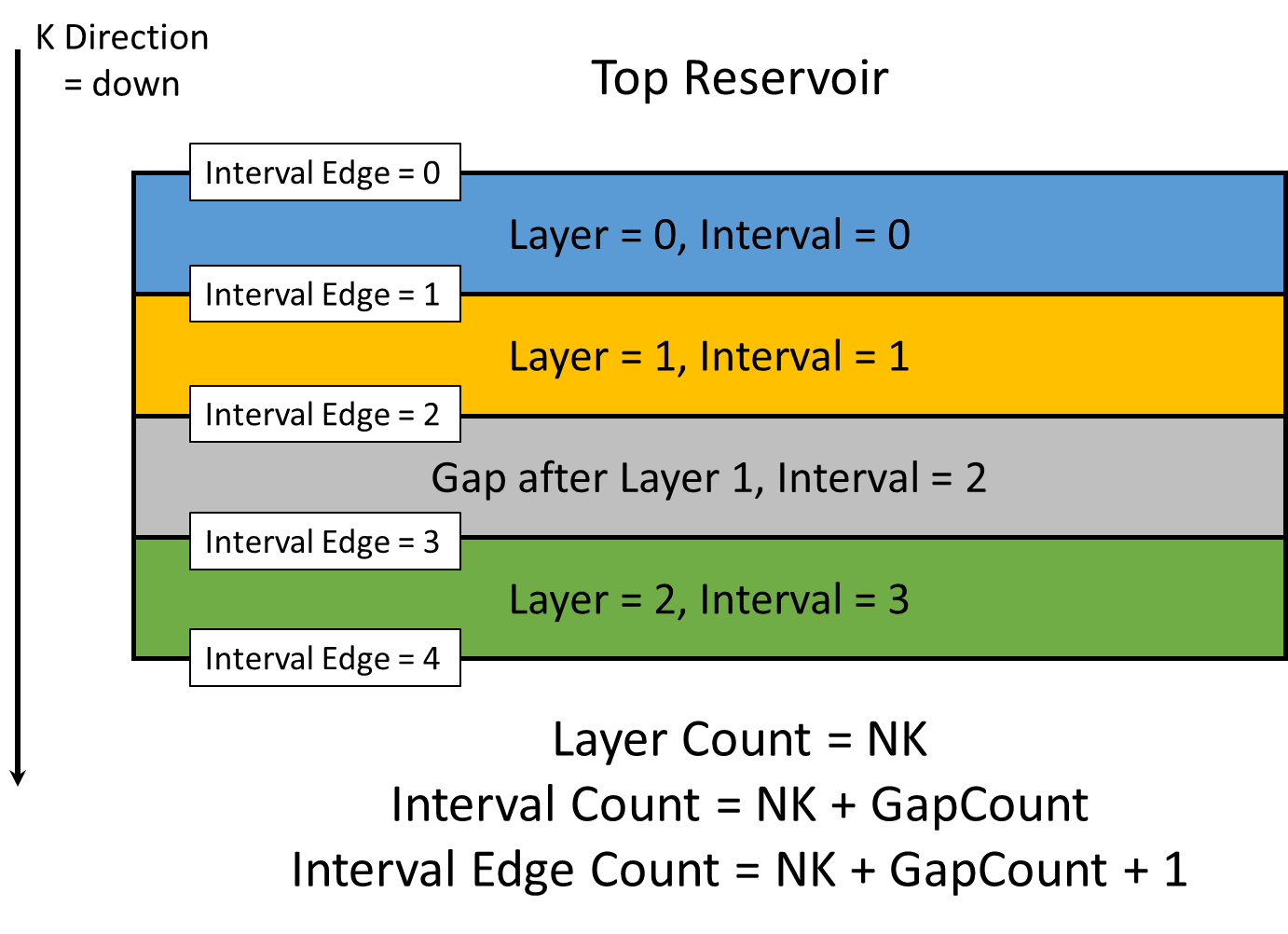11.5 Grid Element Indexing
| Topic Version | 1 | Published | 09/11/2015 | |
| For Standard | RESQML v2.0.1 | |||
RESQML makes extensive use of indexing to attach properties to a representation, and to specify relationships between representations. For a complex object like a grid, with many different indexable elements, the grid indexing may also provide implicit topological relationships between elements, for example, between the columns and pillars of an IJK grid.
In most cases, the indexing of these objects is uniquely specified by their ordering in #RESQML_c_250__GUID-D7147C7F-2017-0008-W2DP-00000000004F .
Table 8—Indexable Grid Elements

The one exception to the sequential ordering specification is for intervals, which consists of the grid layers and the gaps between those layers. In this case, the interval ordering is an expanded version of the layer ordering, with the gaps interleaved between the layers. Specifically, if there are NK layers and GapCount gaps between layers, there will be NK + GapCount intervals. The intervals are, by definition, continuous: the bottom of one interval is the top of the next. As a result, the number of interval edges will be NK + GapCount + 1, as shown in Figure 11.5-2 . Similar “object edge” constructions appear elsewhere in this table.
